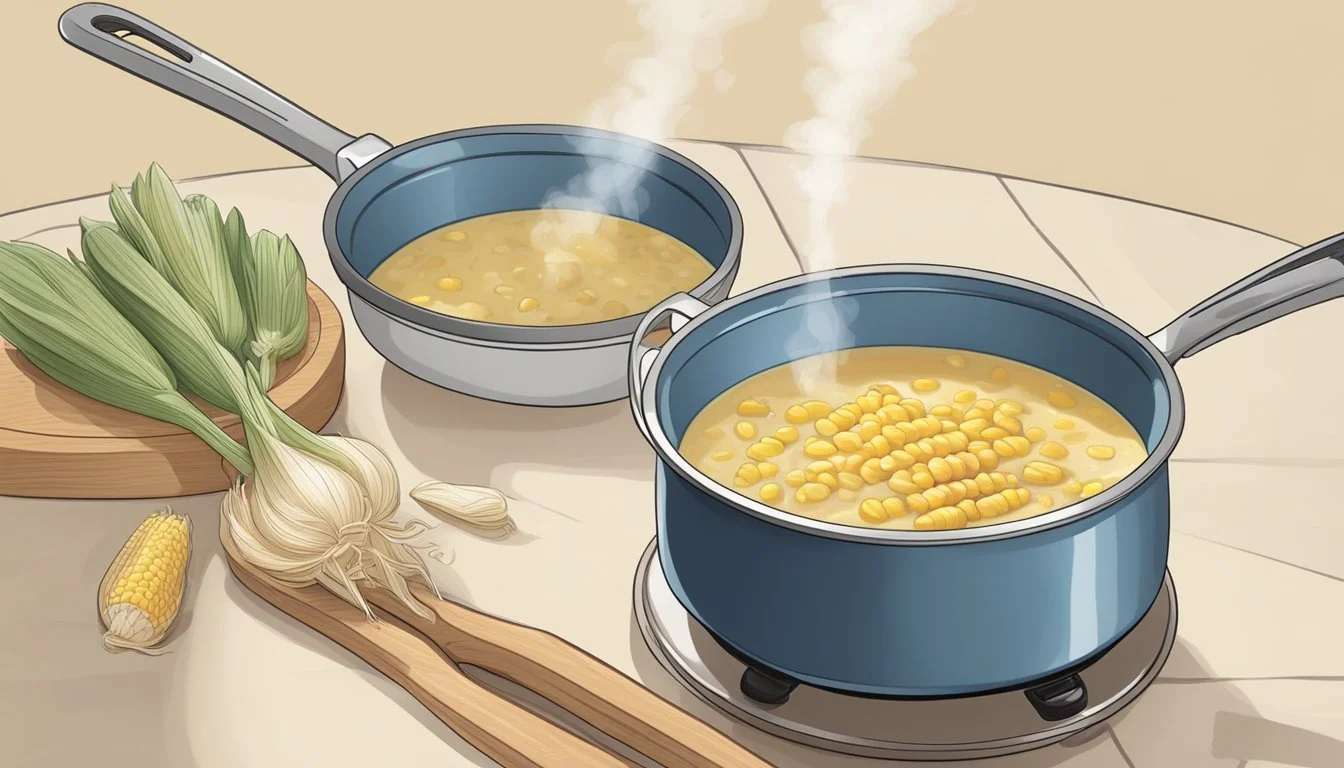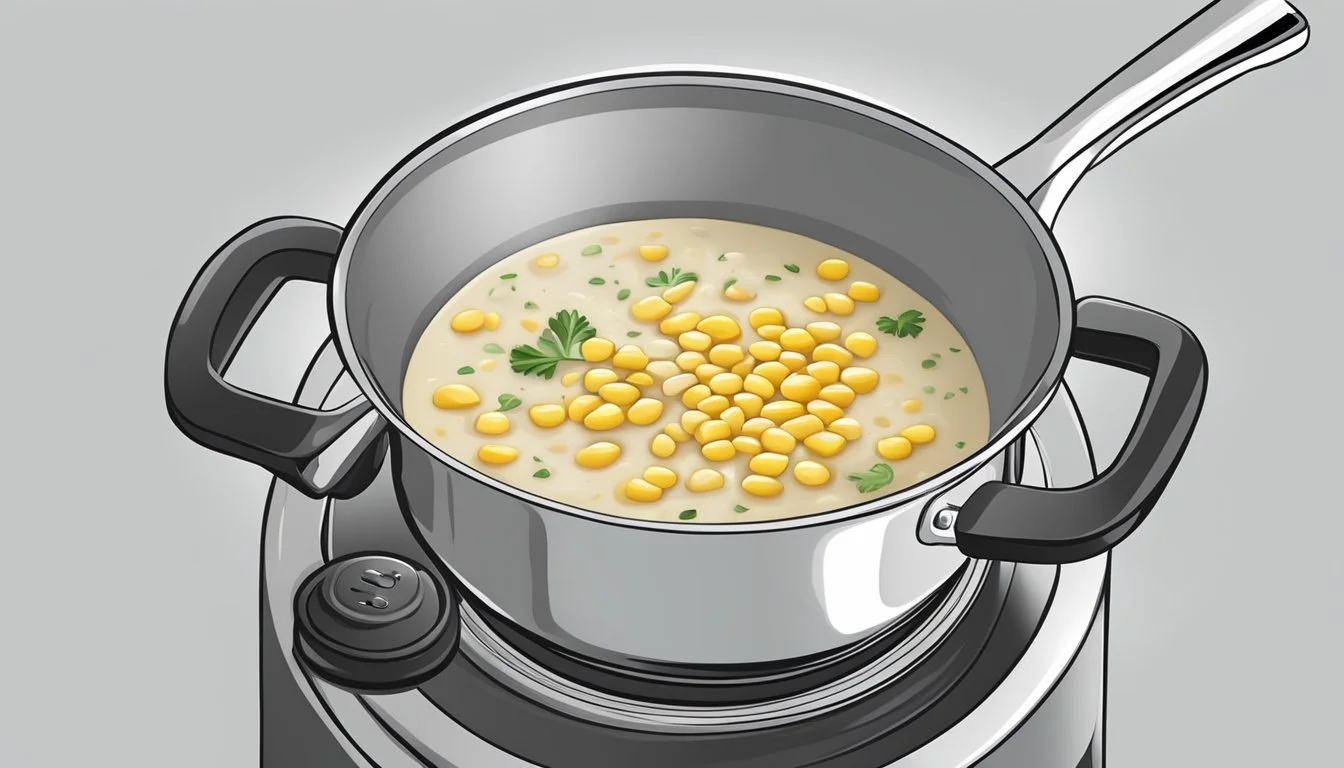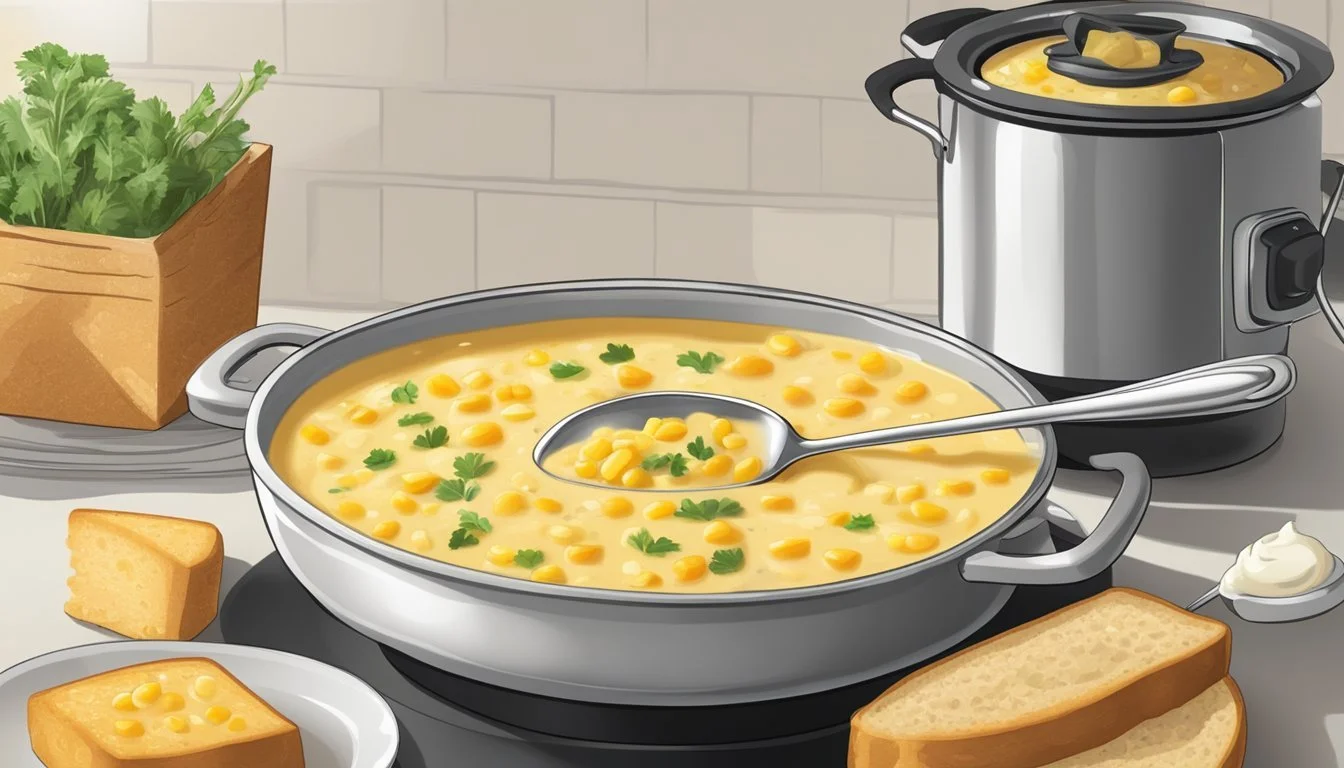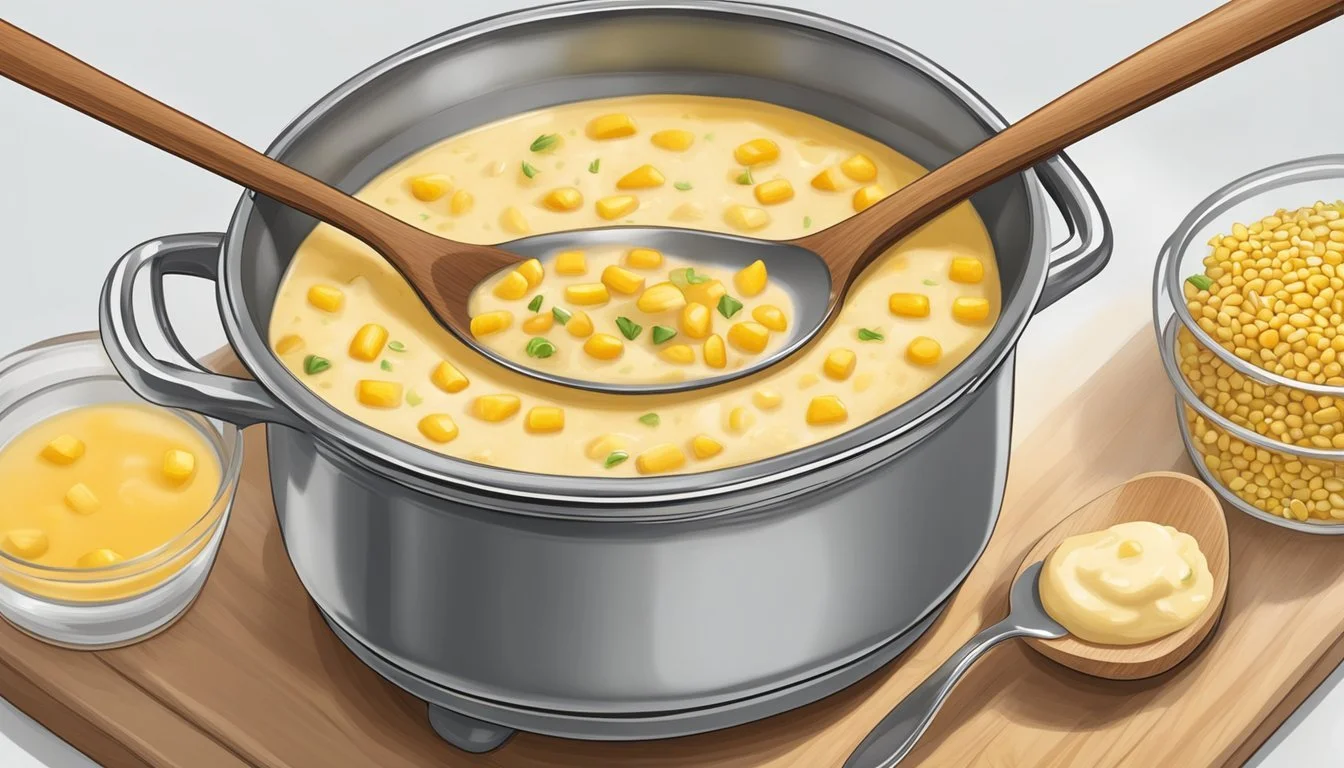Best Way to Reheat Corn Chowder
Tips for a Creamy Consistency
When it comes to reheating corn chowder, retaining its creamy consistency is paramount. Achieving the perfect temperature without compromising the texture requires care and the right method. Many might not realize that the process of reheating can impact the dish's final quality, with improper reheating leading to a watery or separated soup rather than a luxuriously smooth chowder.
The key to warming up corn chowder effectively lies in gentle heat and consistent stirring. On the stovetop, this means bringing the chowder to a simmer over medium heat and stirring it occasionally, which helps distribute heat evenly and prevents the bottom from scorching. This method keeps the integrity of the chowder's creamy base intact, ensuring that every spoonful is as satisfying as when it was first served.
Those opting for a slow cooker to reheat their chowder should preheat the appliance to the desired temperature before adding the soup. Covering the chowder with a lid and allowing it to warm for 45 minutes to an hour enables the heat to gradually permeate through, without rushing the process and risking the creamy texture. Both methods underscore a fundamental rule in reheating this comforting dish: patience is crucial for preserving its creamy charm.
Understanding Corn Chowder
Corn chowder is a treasured dish, loved for its creamy texture and rich flavor. This section discusses the essential aspects and key ingredients that define this comforting soup.
Corn Chowder Basics
Corn chowder is a thick, creamy soup traditionally made with sweet corn, often enjoyed as a warming meal during winter or as a refreshing dish in the summertime. At its core, the recipe involves a blend of corn kernels, cream or milk, and a thickening agent to achieve its signature consistency. Whether prepared as a classic recipe or with innovative twists, corn chowder has remained a favorite due to its versatility and the ease of adding additional ingredients like potatoes, onions, or bell peppers to complement the corn.
Key Ingredients for Authentic Flavor
The authenticity of a corn chowder's flavor hinges on the quality and type of ingredients used in the recipe. While variations exist, the following components are critical to crafting a traditional, creamy corn chowder:
Corn: The star of the dish, either fresh off the cob during summer months or frozen/thawed corn during the winter.
Cream or Milk: Used to create the creamy base texture.
Thickener: Typically flour or a roux, to help achieve the desired consistency.
Vegetables: Such as diced potatoes and onions, for added depth and texture.
Seasonings: Commonly salt, pepper, and sometimes fresh herbs like thyme to enhance the overall flavor profile.
To construct a proper corn chowder, these ingredients are simmered together until the flavors meld and the soup reaches a creamy, hearty thickness. While modern twists can include additional elements like seafood or bacon, the traditional version holds a special place on the dinner table due to its simplicity and comforting nature.
Pre-Reheating Essentials
Before reheating corn chowder, it is crucial to address how it's been stored and the food safety practices to remember, ensuring the chowder remains high-quality and safe to consume.
Storage Tips to Maintain Quality
To store leftover corn chowder, a person should place it in an airtight container and refrigerate it within two hours of cooking. Refrigerator storage keeps the chowder at a safe temperature, reducing the risk of bacterial growth. An optimal storage setup involves:
Cooling the chowder to room temperature to prevent condensation and subsequently, wateriness upon storage.
Sealing the container properly to avoid the chowder absorbing other flavors and aromas from the fridge.
Labeling the container with the date before placing it in the refrigerator, as corn chowder is best consumed within 3-4 days.
Food Safety Considerations
When storing corn chowder, they must ensure it remains out of the "danger zone," which is between 40°F to 140°F as bacterial growth occurs rapidly at these temperatures. The critical steps include:
Prompt Refrigeration: They should refrigerate corn chowder promptly, never leaving it at room temperature beyond two hours.
Reheating thoroughly: Corn chowder needs to be reheated to at least 165°F for proper food safety.
One-time Reheat: For quality and safety, only reheat the amount of chowder one intends to eat as multiple reheats can degrade the texture and flavor, as well as increase the risk of foodborne illness.
Reheating Techniques
When reheating corn chowder, maintaining its creamy texture is crucial. Using the right technique can ensure the chowder heats evenly without separating or becoming too thin.
Stovetop Method for Creaminess
For those prioritizing creaminess, the stovetop method is ideal. Here's a stepwise approach to retain that rich texture:
Pour the chowder into a saucepan.
Heat gently on a stove over medium heat.
Stir frequently to avoid sticking and to distribute heat.
Once hot, reduce the heat to low, and let it simmer for a few minutes before serving.
Microwave Strategy for Quickness
When time is of the essence, the microwave can be a good option to reheat corn chowder quickly:
Transfer the chowder into a microwave-safe bowl.
Cover with a lid or a microwave-safe cover to trap steam.
Heat in short intervals, stirring in-between to heat evenly.
Continue until the chowder reaches the desired temperature.
Oven Approach for Even Heating
The oven is suitable for reheating larger batches evenly:
Preheat the oven to 350°F.
Place the chowder in an oven-safe dish.
Cover with aluminum foil to retain moisture.
Heat for 20-30 minutes, checking occasionally, until the chowder is heated thoroughly.
Ensuring Creaminess
When reheating corn chowder to maintain its creamy texture, managing the soup's thickness and making precise liquid adjustments are crucial. The use of dairy products like milk and heavy cream, as well as butter and flour, play significant roles in maintaining the creaminess of the chowder.
Managing Chowder Thickness
Milk and heavy cream are essential to a creamy chowder. As corn chowder cools, the starches from ingredients like potatoes can absorb liquid, thickening the soup. This thickening effect often continues even when refrigerated. Upon reheating, the chowder may require thinning:
To Thicken:
Gradually add a roux, a cooked mixture of equal parts flour and butter, to the reheated chowder.
Continue stirring the chowder to distribute the roux evenly and avoid lumps.
To Thin:
Introduce additional milk or heavy cream, a tablespoon at a time, stirring consistently until the desired consistency is achieved.
Heat gently to prevent milk or cream from separating.
Liquid Adjustments & Add-ins
The choice of liquids and add-ins should enhance the soup without overpowering the delicate balance of flavors. Careful adjustments are paramount:
Adding milk can restore creaminess, but one should avoid boiling as it can cause curdling.
Heavy cream is more stable under heat and can be used for additional richness.
Butter can be stirred in at the end to add a velvety finish.
One should always remember to heat slowly and stir often, which helps distribute heat evenly and maintain the texture of the chowder. If the soup becomes too thick, it can be gently simmered to reduce and concentrate the flavors, but this method should be used cautiously to avoid altering the intended taste and consistency.
Enhancements and Accompaniments
Enhancing the flavors of reheated corn chowder and choosing the right accompaniments can transform a simple dish into a delightful meal. Garnishes can add texture and freshness, while well-chosen sides complement the creamy chowder beautifully.
Optimal Garnishes for Reheated Chowder
The addition of garnishes to a creamy corn chowder not only enriches its visual appeal but also introduces contrasting textures and flavors. Here are recommended garnishes:
Chopped parsley or chives: (how long do chives last?) They provide a fresh, herbal note.
Grated cheese: A sprinkle of sharp cheddar or smoked gouda melts into the chowder, adding richness.
Crumbled bacon: Infuses a smoky depth and satisfying crunch.
These garnishes should be added after reheating the chowder to maintain their texture and flavor integrity.
Pairing with Sides
Pairing corn chowder with appropriate sides can create a more rounded meal experience. The following sides are excellent companions:
Crusty bread or cornbread: These are ideal for dipping and add a welcome texture contrast to the creamy soup.
Salad: A light, green salad with a tangy vinaigrette balances the chowder’s richness.
Quiche: (What wine goes well with quiche?) Incorporating elements like ham or cheese in a quiche can echo and complement the chowder’s flavors.
These sides harmonize with the chowder by offering varying textures and flavors that ensure each bite is interesting and satisfying.
Variations of Corn Chowder
Corn chowder is a versatile dish that can easily be adapted to suit different tastes and dietary preferences. This section explores the range of variations from the classic recipe to innovative twists that incorporate various ingredients such as seasonal vegetables, meats, and non-dairy alternatives.
From Classic to Contemporary Versions
The classic corn chowder often features sweet corn as the star, paired with a creamy base and chunks of potatoes. Hearty and satisfying, this traditional version may also include bacon or ham for added flavor. Contemporary variations have evolved by introducing ingredients like roasted red peppers, jalapeños, or even crab (how long does crab last?) meat to elevate the dish with new textures and flavors.
Classic Components:
Sweet Corn
Potatoes
Cream or Milk
Bacon or Ham (optional)
Contemporary Additions:
Roasted Red Peppers
Jalapeños
Crab Meat or Other Seafood
Herbs and Spices
Vegetarian and Vegan Alternatives
Vegetarian versions of corn chowder are abundant with vegetables such as bell peppers, celery, and onions. For a vegan corn chowder, traditional cream is often substituted with coconut milk, which brings a hint of sweetness and a creamy texture without any dairy. Proteins like tofu or tempeh (What wine goes well with tempeh?) can be added to create a more substantial meal.
Vegetarian and Vegan Ingredients:
Coconut Milk or Almond Milk
Tofu or Tempeh (for vegan protein)
Assorted Vegetables
Seasonal and Regional Twists
Seasonal variations of corn chowder may incorporate fresh corn during the summer or frozen corn during the colder months. In regions like New England, there's an influence from New England Clam Chowder, where corn chowder might include clams (What wine goes well with clams?) or fish for a seaside twist. In the American South, one might find corn chowder that includes okra and andouille sausage for a regional touch.
Seasonal Ingredients:
Fresh Corn (summer)
Frozen Corn (winter)
Regional Variations:
Clams or Fish (New England-style)
Okra and Andouille Sausage (Southern-style)
Throughout America, corn chowder's adaptability makes it an enduring favorite, with each version offering its unique taste and appeal.
Final Tips and Common Mistakes
When reheating corn chowder, the goal is to achieve the perfect consistency and flavor. This section will guide you through troubleshooting texture issues and reheating techniques to maintain a creamy and tasty chowder.
Troubleshooting a Too-Watery or Too-Thick Chowder
A frequent issue when reheating corn chowder is an inconsistent texture—either too watery or too thick. If the chowder has thinned out,
For Watery Chowder:
Thickening Agents: Add a thickening agent like cornstarch or a roux. For cornstarch, mix equal parts cornstarch and water to create a slurry, then stir it into the chowder gradually until the desired thickness is reached.
Pureed Vegetables: Blend some of the soup’s vegetables and add the puree back into the pot to naturally thicken the chowder.
For Thick Chowder:
Additional Liquid: Gently stir in small amounts of milk or broth to thin it out, being careful not to make it too watery.
Heat Adjustment: Reheat slowly on a lower heat to prevent further thickening and to preserve the creaminess.
Reheating Without Compromising Taste
Reheating corn chowder correctly ensures the flavor remains rich and the texture creamy.
On the Stovetop: The best way to reheat corn chowder is gently on the stovetop. Keep the flame low to avoid burning, and stir occasionally.
In the Oven: For oven reheating, place the chowder in an ovenproof dish, cover with foil, and reheat at 350°F to ensure even warmth.
When reheating, be mindful not to bring the chowder to a brisk boil, as this can break down the dairy components and cause separation, impacting both taste and texture.








